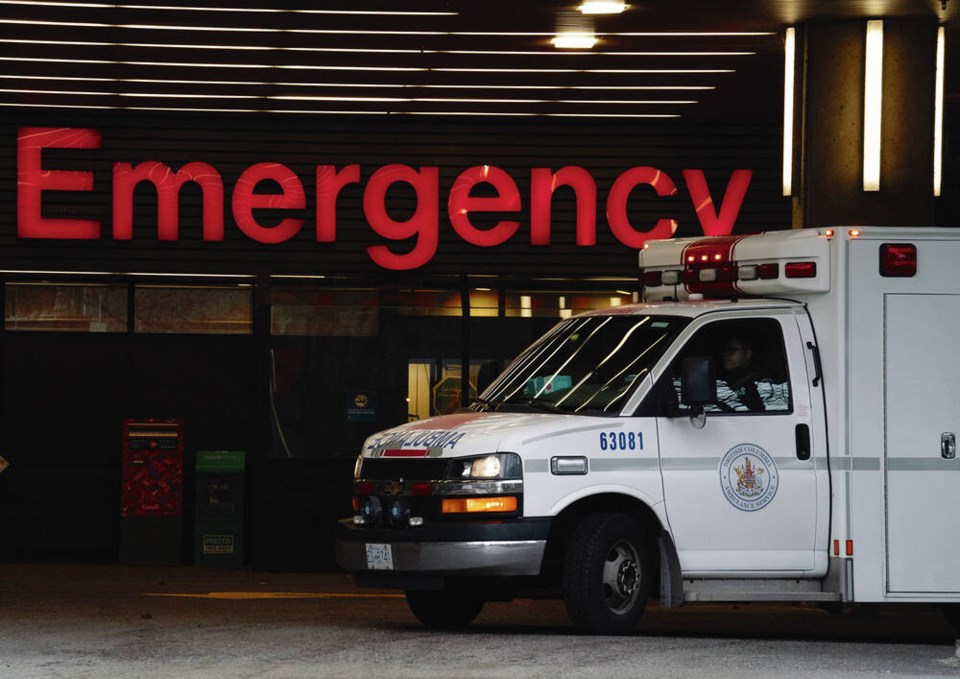On Aug. 27, a 72 year-old Parksville resident, Chuck Blakey, lay dying on his kitchen floor while family members waited for an ambulance to arrive. When they called 911, they were answered by an operator who put them on hold, and played an automated message over and again.
When finally an ambulance did show up, 30 minutes later and 15 minutes too late, Blakey was dead.
On Sept. 14, a Qualicum Beach man waited in agony for an ambulance to arrive. Ian Weir had been through prostate surgery and his bladder was blocked, allowing only a few drops of blood to emerge.
His wife called 911, and was told she was third in line. Exasperated, she ran to the ambulance station two blocks away where she was met with a chilly response.
An ambulance did at last arrive, 30 minutes later. “Seriously,” Weir said, “if I had a gun that night I would have shot myself.”
Nor were these isolated incidents. A 911 operator told the Times Colonist that the tragedy of a man dying while on hold to the ambulance service is a daily occurrence.
So what is going on? This is the kind of thing you’d expect in a third-world city during a Category 5 hurricane, with a metre of water in the streets and the power lines down.
Part of the answer is that we’ve stretched government to the breaking point, and beyond.
Between 1966 and 1996, there had been a huge expansion in the size and scope of the public sector. But the money wasn’t there to pay for it.
During those three decades, every government in Canada, federal and provincial, ran annual deficits. When eventually that couldn’t continue, the axe came out, and it fell most heavily on the health-care system, which was then, and still is, the most costly public service.
I ran the B.C. health ministry in the early 1990s, and before that, the first regional health authority in Saskatchewan. I was there when the music stopped.
The early cuts were easy. Had we halted there, quality of care could have been preserved. But we didn’t.
For even in the midst of increasingly desperate attempts by managers to economize, our political leaders continued their compulsive habit of expanding the scope of services we couldn’t afford. And they’re still at it.
During the recent federal election campaign, each party tried to outbid the others in promising new health services. So we were to have free dental care, a national long-term care strategy, abolition of private nursing homes over time, and much more.
Essentially, what this election amounted to was an attempt to buy votes by dangling shiny new baubles. I put the all-in cost of these health-care promises around the $100-billion mark.
But how is this money to be found? In part, by allowing the most basic services to wither on the vine.
That’s one reason it can take longer to get an ambulance to your door than it takes to have a pizza delivered. Vital services are strained past breaking point.
But there’s another part to the story. Cabinet ministers in Canada, both federal and provincial, frequently have very limited tenures in the portfolios they’re assigned.
In the 26 years between 1991 and 2017, the B.C. health ministry had 16 different ministers, an average of 19 months per minister.
In such a limited tenure, most ministers never come to grips with their full range of responsibilities. They’re easily distracted by the crisis of the moment, or wounding stories in the media.
What they do grasp is the need to create good news, now, tomorrow and the next day. The search for a legacy takes precedence over competent but unspectacular management, because the latter requires time, and time you do not have.
And so the long downhill march goes on, punctuated with political frivolities and men like Ian Weir and Chuck Blakey, gasping in pain or dying on the kitchen floor.



